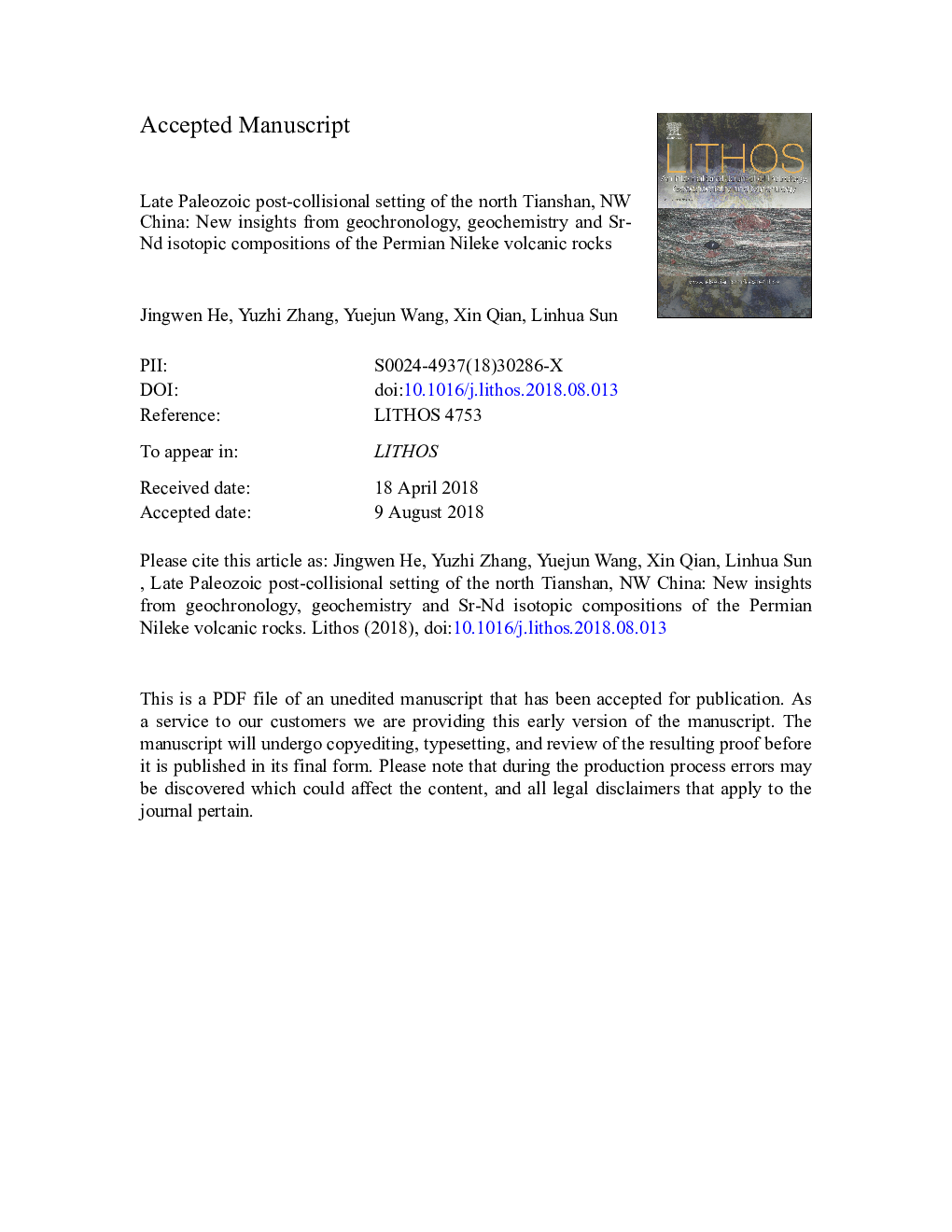| Article ID | Journal | Published Year | Pages | File Type |
|---|---|---|---|---|
| 10119973 | Lithos | 2018 | 53 Pages |
Abstract
The northern margin of the Yili Block, NW China, contains widespread Permian volcanic rocks that provide insight into the late Paleozoic evolution of the North Tianshan Orogenic Belt in the southwestern Central Asian Orogenic Belt. This paper presents geochronological, geochemical and Sr-Nd isotopic data for Permian volcanic rocks of the Hamisite and Wulang formations in the Nileke area of the western Awulale Mountains, and provides new constraints on their ages, petrogenesis and tectonic settings. The whole-rock 40Ar/39Ar plateau age of 281.6 ±â¯1.0â¯Ma for basalt in the Hamisite Formation suggests that these volcanic rocks were erupted in the early Permian. The studied samples comprise mainly basalt and basaltic andesite, with positive εNd(t) values, enriched light rare earth and large-ion lithophile elements, and depleted high-field-strength elements, indicating an origin from a subcontinental lithospheric mantle wedge that was probably metasomatised by slab-derived fluid and sediment-derived melt beneath the Yili Block. Based on geochemistry and the regional geological records, we suggest that the Permian Nileke volcanic rocks of the Yili Block were formed in a post-collisional setting, following slab break-off after closure of the North Tianshan Ocean. However, the Hamisite volcanic rocks were derived from a deeper mantle source, probably through thickening of the lithospheric mantle and crust of the Yili Block.
Related Topics
Physical Sciences and Engineering
Earth and Planetary Sciences
Geochemistry and Petrology
Authors
Jingwen He, Yuzhi Zhang, Yuejun Wang, Xin Qian, Linhua Sun,
